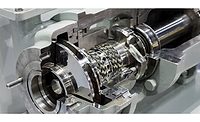BOSTIK: Anaerobic Engineering Adhesives
These adhesives offer a number of advantages over mechanical solutions, such as long-term reliability, increased versatility of application, and protection against corrosion.

Bostik, an Arkema company, has launched a new range of high-performance anaerobic adhesives to provide engineers with reliable, cost-effective, and convenient alternatives to commonly used mechanical fastening solutions such as washers, gaskets, pins, hemps, and tapes. An extension of Bostik’s Born2Bond™ portfolio, the new anaerobic range has reportedly been designed specifically to address challenges engineers face with increasingly demanding environmental and safety regulations, smaller and more complex designs, and more adaptable and faster processes. These challenges are particularly felt by those working in automotive, electronics, general assembly, luxury goods, medical devices, maintenance repair and operations (MRO), and automotive aftermarket (AAM) sectors.
The range is designed for “by-the-dot,” metal-to-metal bonding and includes products designed to provide heat resistance (up to 230°C, depending on product and category). They also offer single-component, non-solvent-based, and multiple-strength/viscosity alternatives to threadlocking, pipe sealing, gasketing, and retaining. The advantages of high-performance anaerobic adhesives over mechanical solutions include: reduced inventory requirements (e.g., for different size and design washers and gaskets); long-term reliability; increased versatility of application; protection against corrosion; and resistance to vibration, heat, and chemicals.
Born2Bond anaerobic adhesives also help to support sustainability and safety targets through low-energy application processes and by being non-solvent based. Selected grades are also NSF certified. A Non-CLP Classified range carrying a non-hazard label (WL or White Label) is also in development and will be launched soon.
“They provide 100% surface-to-surface contact and exceptional resistance to wear and tear,” said Polivio Goncalves, Bostik’s global head for Engineering Adhesives. “This provides the strength and reliability required within critical bonding solutions, while also meeting today’s more demanding environmental and health and safety regulations. The time has come to move away from mechanical bonding solutions.”
Additional information is available here.
Looking for a reprint of this article?
From high-res PDFs to custom plaques, order your copy today!







